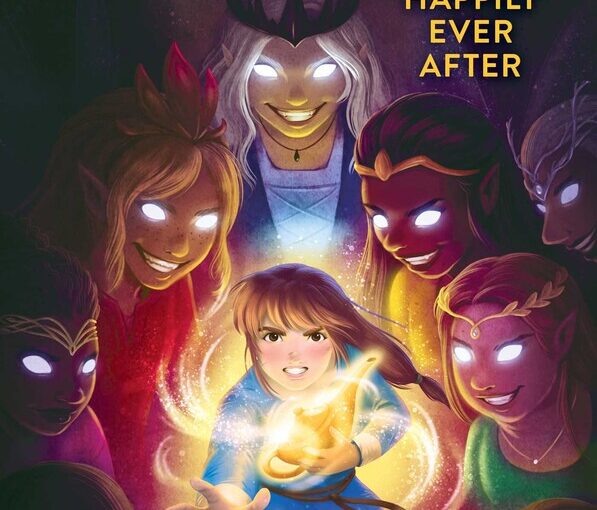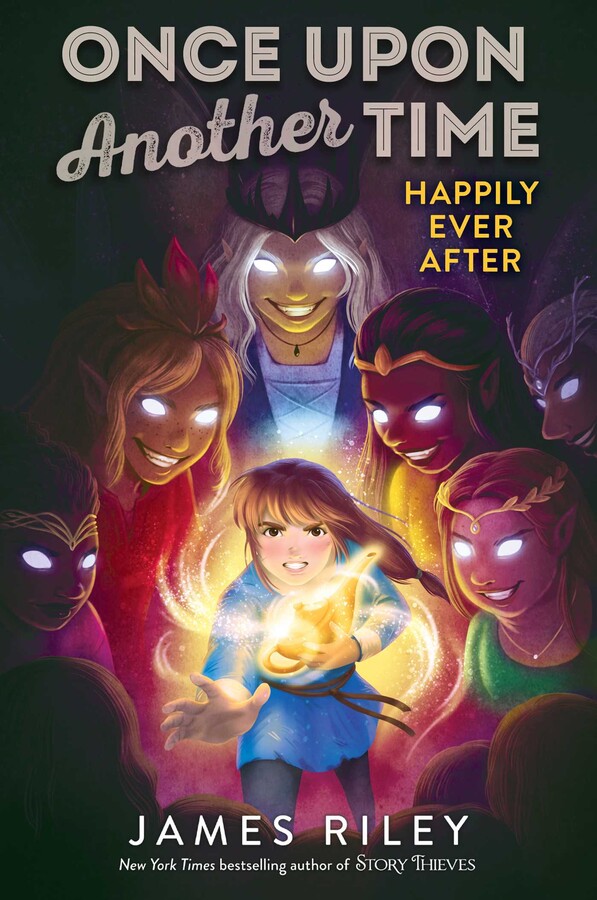Trilogies are tricky business. Which came first, the trilogy or the story? That’s the question that sometimes vexes readers and reviewers. If you add too much backstory then it could water down the traction that readers would have with the characters, but if you don’t add enough then people won’t be emotionally invested in them. I completely understand the creative will to have more than one book, but am aware that it can be perceived as simply needing multiple entries to sell books. It’s a thin line, isn’t it? Once Upon Another Time: Happily Ever After (or Once Upon Another Time 3) deftly approaches that line, happily looks over it, and then dances back and forth over that line on repeated occasions.
There are a couple of story threads that could’ve gone sideways in this book, or any book when it’s attempting to tie up a trilogy. In Once Upon Another Time: Tall Tales, the book ended on a cliffhanger. It was such a curt cliffhanger that our initial review of it likened it to Back to the Future II. The ending changed the trajectory that most of the actions that the book had set up, but it was not done in a dreamy, Dallas-shower dream sequence manner.
As Happily Ever After gets started, The Cursed City became the Blessed City and all of the fairy tale beings or creatures are adapting to being regular people. The giants became normal sized and nobody has any special abilities or powers for the most part. Lena, who used to be a giant, albeit a giant who was smaller than the others, feels as if something is off. She starts questioning the wishes of fairy queens, who created all things, and wonders if she’s not meant for bigger things.
The Story Book is the guide for the townspeople. However, early in the story, Lena discovers a new book that’s called Happily Ever After. It’s a book that provides guidance from past lessons and seems to write itself at times, plus why would a book with such a happy title be banned from being read? It’s quite meta having a major plot point be titled the same thing as the book’s title, but that’s half of the fun.
You’re reading about characters that seem like fairy tale people that you know, but they’re just a bit different. It’s definitely parallel to ideas that live in that world, like the upcoming election of the prince and princess of the ball, but it’s not right. As the characters in Happily Ever After learn more about the big deception the adventure grows and it’s up the Lena and one of her friends to make things right.
There are many moving parts in Happily Ever After and it could’ve gotten very confusing, but for the most part, it keeps everything together. Each character in the book is under a spell and has had adventures that they’re unable to remember. Sometimes they’ll have flashbacks, when the font is italics, and their character remembers their other life. This is a very effective way to let readers in on the fact of their previous story if they haven’t read the two books before this.
There’s also a charming irreverence that the book has. Some chapters are given a sentence that summarizes the pending story, but with content that’s been stricken out or augmented in all capital letters. It’s a proofreader gone rogue and works in the same way that it did when Monty Python did it. Ah, it’s goofy fun, but that sentence will help set up, or remind readers what to look for and expect from the chapter. Consider it a very obvious and direct context clue, with just a hint of sarcasm.
Consider Once Upon Another Time: Happily Ever After a subversion of a fairy tale for those who might, or might not really like fairy tales. Much like the way that the Barbie film was marketed towards those who hate or love Barbie, this book will work for those on either side of the fairy tale line. It’s a book that’s aimed at mglit readers (or older), but is aware that those ages won’t warm up to a read that’s too centered on magic or giants unless it’s laced with a bit of humor. Thanks to the way in which Happily Ever After is set up you don’t need to read the first two books in the series, but it’s so much of an easy-going, fun time that your mglit reader will probably want to.
Once Upon Another Time: Happily Ever After is by New York Times bestselling author James Riley and is available on Aladdin, an imprint of Simon & Schuster.
There are affiliate links in this post.






 Facebook
Facebook Twitter
Twitter Flickr
Flickr GooglePlus
GooglePlus Youtube
Youtube